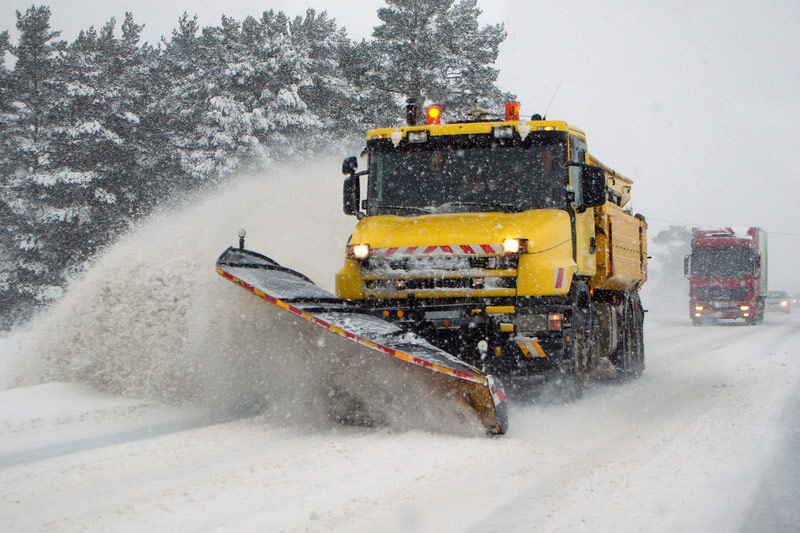(Repeats to widen distribution)
By Karen Braun
CHICAGO, Nov 18 (Reuters) - The Northern Hemisphere may be
subject to more cold outbreaks than usual come January thanks to
the polar vortex.
"Polar vortex" became a household phrase in North America
during the bitterly cold winter of 2013-2014, but this
phenomenon has always existed and can also impact both Europe
and Asia.
The polar vortex is one of the factors that control how much
cold Arctic air is allowed to infiltrate the mid-latitudes
during the winter, when the vortex is at maximum strength.
Recent atmospheric activity in the Arctic suggests that the
polar vortex is likely to come into play for the Northern
Hemisphere this winter, as there may be a relationship between
autumn and winter polar vortex strength.
It is impossible at this point to know exactly when and
where the polar vortex anomaly will occur, though there will be
some clues to watch for once winter arrives.
Should the frequency of cold episodes increase come the new
year, this could provide a boost to sluggish U.S. energy markets
but threaten winter grain and oilseed crops across the Northern
Hemisphere, particularly in Eastern Europe where plant health is
already of concern.
POLAR VORTEX 101
The polar vortex is a large, spinning mass of cold air in
the upper atmosphere that sits over the poles year-round but
intensifies in each respective winter.
Think of the polar vortex like a top. The faster the top
spins, the more stable it becomes as it preserves shape. But
when it loses speed, it also becomes unstable and the top will
begin to wobble from side to side.
This is exactly what happens to the polar vortex. Left
undisturbed, Arctic air is unlikely to escape the spinning
"vortex" down into the mid-latitudes. If it weakens and the
upper level winds slow down, the polar vortex will tilt toward
North America, Europe, or Asia.
Once the weakened polar vortex begins to shift toward the
continent, it can take anywhere from days to weeks for ice-cold
Arctic air to arrive. The duration depends on the intensity of
the event and other atmospheric factors, such as a blocking
pattern.
Blocking patterns, or blocks, are large, stationary
high-pressure systems that prevent the advancement of adjacent
air masses. If a strong block is in place near a tilted polar
vortex, this could prevent the exit of the vortex air from the
region, thus prolonging the Arctic blast.
This is what happened in early 2014, when a chunk broke off
from the polar vortex and descended upon North America. The mass
of cold air became wedged between the northwesterly jet stream
and a blocking pattern over Greenland and delivered the United
States and Canada one of the coldest winters ever recorded.
Complete destabilization of the polar vortex is caused in
part by Sudden Stratospheric Warming (SSW) events, which can
occur when increased storm activity in the Northern Hemisphere
reaches a critical threshold.
During a SSW event, the stratosphere drastically warms over
a short period. The polar vortex suddenly warms as a result,
causing it to break apart for several weeks, thus increasing the
chance for cold outbreaks across the Northern Hemisphere.
The polar vortex seemingly operates independently of other
winter-dictating phenomena, such as the North Atlantic
Oscillation and the Arctic Oscillation (NAO/AO). In fact, both
the NAO and AO tracked predominantly positive values throughout
the winter of 2013-2014, which would generally be expected to
produce warmer-than-normal temperatures in the Northern
Hemisphere.
FRIGID START TO 2016?
There is good reason to believe that cold outbreaks might be
commonplace in the Northern Hemisphere during January and
February based on the polar vortex.
Evidence suggests that a very strong polar vortex between
October and December is likely to weaken significantly during
January and February.
During October 2015, the polar vortex was the
seventh-strongest on record since 1948. If it continues its
strength through the end of 2015, the chances for it to weaken
in the beginning of the year are high, meaning that cold air
outbreaks would be more likely in the Northern Hemisphere come
January.
Also, the current El Niño state may increase these chances
as some research suggests that SSW events are more likely to
occur during the wintertime under El Niño conditions rather than
La Niña conditions.
The exact region of impact would not be determinable at this
early stage, but as we move into the winter months, we can be
watching for vortex-weakening SSW events and any subsequent cold
air protrusions south of the Arctic Circle.
This might be disappointing news for those in North America
who have been banking on a warmer winter thanks to El Niño, but
it could be good news for U.S. energy suppliers hungry for a
boost to demand.
Warmer weather has dominated the United States this autumn
and has sharply reduced heating demand, leading to unusually
high stocks of both heating oil and natural gas for this time of
year.
But in the agriculture space, this could make for unhappy
farmers across the United States and Europe as it takes only one
night of frigid temperatures to significantly damage or kill off
dormant winter grains. Black Sea crops could be the biggest
losers from this scenario as the winter wheat crop is already
stressed from the recent drought.
Snow cover will be the key to protecting dormant crops from
winter's wrath. But if this year's snowpack falls short of
expectations, exposure to the elements will be farmers' No. 1
concern.
(Editing by Matthew Lewis)
